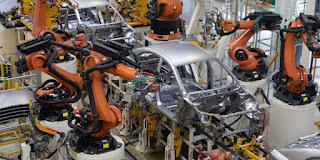About the Conference:
Larix International is delighted to welcome to the “International Conference on Mechatronics and Robotics”, scheduled in Dubai, UAE during February 26-27, 2020. The aim of Robotics 2020, the conference is to provide a platform for researchers, engineers, academics as well as industry professionals from all over the world to present their research results and development activities in the area of Mechatronics and Robotics Engineering. This Robotics conference 2020, provides opportunities for delegates to exchange new ideas and research findings in a face to face environment, to establish business or research relationships and to find global partners for future collaboration. The main discussion in the conference would be on advanced motion control, sensors/actuators, micro and nano-mechatronics, robotics and biomechatronics, intelligent control and AI in mechatronics and mechatronics education.
Why Robotics 2020:
The International Conference on Mechatronics and Robotics is a unique platform for academic and industrial Engineering experts in the world and is the flagship annual event. Your participation in Robotics 2020 will enable you to:
· Hear plenary lectures by stellar speakers who are leading Engineering companies.
· Meet invited speakers who are world leaders in their fields.
· Present your scientific results to the most relevant audience either as a poster or oral presentations.
· Get a global perspective of Robotics and Material Engineering.
· Attend Networking events on the first day of the conference.
· Participate in or visit the trade exhibition. Network with Robotics experts from academia and industry from 60+ countries.
· Become Robotics 2020 sponsor and showcase your products.
· Present products, services or activities offered by companies & scientific organizations.
· Participate in “Highlight events” that focus on current challenges and controversies.
Target Audience:
· Professors
· Scientists
· CEOs
· Directors
· Co-Executives
· Students
· Research Scholars
· Robotics Industrialists
· Robotic Programmers
· Surgeons


















